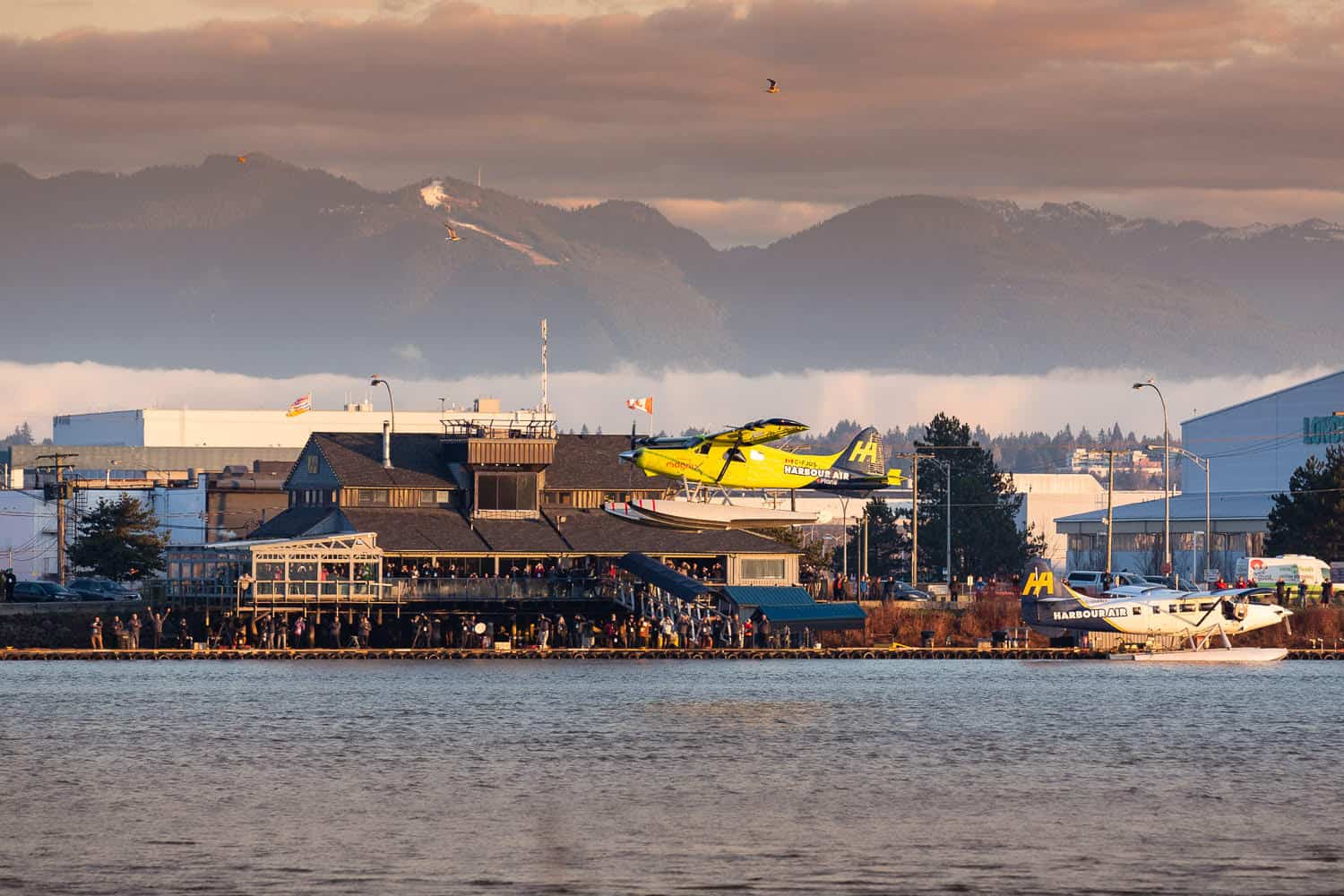
Inaugural flight is the first step in becoming the world’s first all-electric commercial fleet
VANCOUVER, British Columbia – December 10, 2019 – Harbour Air, North America’s largest seaplane airline and magniX, the company powering the electric aviation revolution, today announced the successful flight of the world’s first all-electric commercial aircraft. The successful flight of the ePlane, a six-passenger DHC-2 de Havilland Beaver magnified by a 750-horsepower (560 kW) magni500 propulsion system, took place on the Fraser River at Harbour Air Seaplanes terminal in Richmond (YVR South) this morning. The plane was piloted by Harbour Air CEO and founder Greg McDougall. This historic flight signifies the start of the third era in aviation – the electric age.
“Today, we made history,” said Greg McDougall, CEO and founder of Harbour Air Seaplanes. “I am incredibly proud of Harbour Air’s leadership role in re-defining safety and innovation in the aviation and seaplane industry. Canada has long held an iconic role in the history of aviation, and to be part of this incredible world-first milestone is something we can all be really proud of.”
Earlier this year, Harbour Air announced its partnership with magniX and the company’s intention to build the world’s first completely electric commercial seaplane fleet. The magni500, which was unveiled at the Paris Air Show in June, 2019, is a high-power-density electric propulsion system that provides a clean and efficient way to power airplanes. Today that plan took flight and became a reality.
“In December 1903, the Wright Brothers launched a new era of transportation—the aviation age—with the first flight of a powered aircraft. Today, 116 years later, with the first flight of an all-electric powered commercial aircraft, we launched the electric era of aviation,” said Roei Ganzarski, CEO of magniX. “The transportation industry and specifically the aviation segment that has been, for the most part, stagnant since the late 1930s, is ripe for a massive disruption. Now we are proving that low-cost, environmentally friendly, commercial electric air travel can be a reality in the very near future.”
magniX and Harbour Air will now begin the certification and approval process for the propulsion system and the retrofitting of aircraft. Once the certification is complete, the rest of the fleet can be magnified with magniX’s all-electric propulsion technology.
About Harbour Air
Founded in 1982 with two small seaplanes, Harbour Air is North America’s largest seaplane airline — and the first to be fully carbon-neutral. The company’s international seaplane service, which originally began as a service for the forestry industry in B.C., is now a quintessential west coast experience. With a showcase fleet of more than 40 aircraft, Harbour Air offers up to 300 daily scheduled flights, scenic tours, adventure packages, and private flights. With 12 scheduled destinations connecting downtown Vancouver, Victoria, Seattle (WA), Nanaimo, Tofino, Whistler, Richmond (YVR South), Sechelt, Salt Spring Island, Pitt Meadows, Maple Bay and Comox, B.C. born Harbour Air welcomes 500,000 passengers every year. For more information, visit staging.harbourair.com.
About magniX
Headquartered in Redmond, WA with engineering facilities in Redmond and in Australia, magniX is dedicated to connecting communities by enabling an era of affordable and clean commercial air travel with all-electric propulsion. Developed with proprietary technology, magniX offers a range of revolutionary solutions including the 375HP and 750HP all-electric propulsion systems – with increased efficiency and zero emissions. For more information, please visit: www.magnix.aero.
Media Contact:
Samantha Kent
Harbour Air
skent@harbourair.com
Aubrey Lerche
Barokas Communications for magniX
magniX@barokas.com

UPDATE: Due to the rapidly changing weather, we have decided to bring the first flight forward by one day. The world’s first all-electric commercial aircraft will now take off on Tuesday, December 10th from our Richmond (YVR South) location at 8:30am*.
—
Join us in making history. World’s first fully-electric commercial aircraft: Dec 2019
We are thrilled to announce, following the successful installation and testing of the magniX propulsion system, our incredible maintenance team along with our partners have reached the next level of critical milestones.
Harbour Air and magniX will unveil the world’s first Beaver seaplane retrofitted with a 750 horsepower all-electric magni500 propulsion system for the inaugural test flight on Tuesday, December 10*. The prototype will take flight from our Richmond (YVR South) location. Please see below for a highlight of the work and efforts completed to date as well as next steps to take us to this pivotal moment in aviation history.
As of November 28 the following has been completed:
- All batteries installed
- BMU (Battery Management Unit) Installed
- All systems connected and tested
- Power turned on and static testing completed
- Turned propeller using only battery power
- Full power ground test runs done
- Wings installed and flight controls rigged
Next Steps:
- Continue system checks and testing
- Crew preparations
- Test flight permits signed
*Please note: based on the permitting issued by Transport Canada, this flight test is weather-dependent, as such timing of the flight is subject to change.
Read more about our ePlane project in the media:
A Zero-Emission Seaplane Prepares for Takeoff
Canada’s Harbour Air will test-fly a prototype electric aircraft in December.
Bloomberg Businessweek
November 15, 2019
Electric Avenue: Behind Harbour Air’s bid to become the world’s first fossil fuel-free airline
BC Business
November 14, 2019

We are thrilled to share the completion of significant project milestones in the conversion of the world’s first seaplane to ePlane!

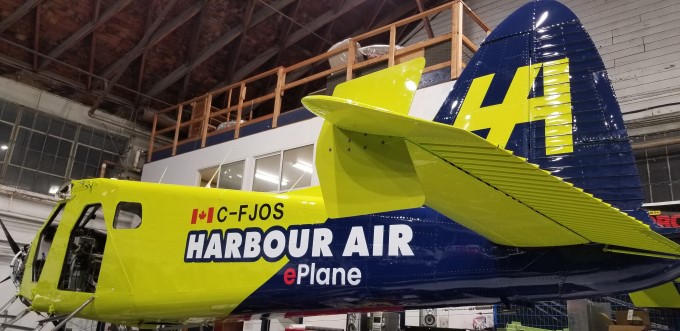
As of October 23, 2019, the following work has been completed:
- Aircraft painted and decals applied
- Motor mount received and installed
- Ground charging station arrived and wired in
- Battery mounts fabricated and installed
- Cockpit reconfigured and modified
- Aircraft installed on floats
- Motor arrived and installed
- Inverters arrived and installed
- Inverter cooling system developed and installed
- magniX team arrived on site to work with Harbour Air team
- Wiring harnesses being built
- Inverters and motor calibrated
- Software development being completed on site
- First battery string arrived
- Worked through regulatory requirements to achieve first test flight
- magniX test equipment installed
- 28V system install completed and checked
Next steps:
- Receive final battery strings
- Receive and install BMU (Battery Management Unit)
- Put power on and begin testing
- Continue to develop and connect wiring harnesse
Read more about our ePlane project in the media:
Electric seaplanes could be this Canadian airline’s ticket to ditching fossil fuels
Popular Science
April 22, 2019
Harbour Air and the Future of Flying Electric
Douglas Magazine
July 30, 2019
In Our Backyard – Climate Change (coverage begins at 52:20)
CBC News: The National
August 13, 2019
Stay in the loop! Click here to sign up to receive news and announcements about our ePlane project.
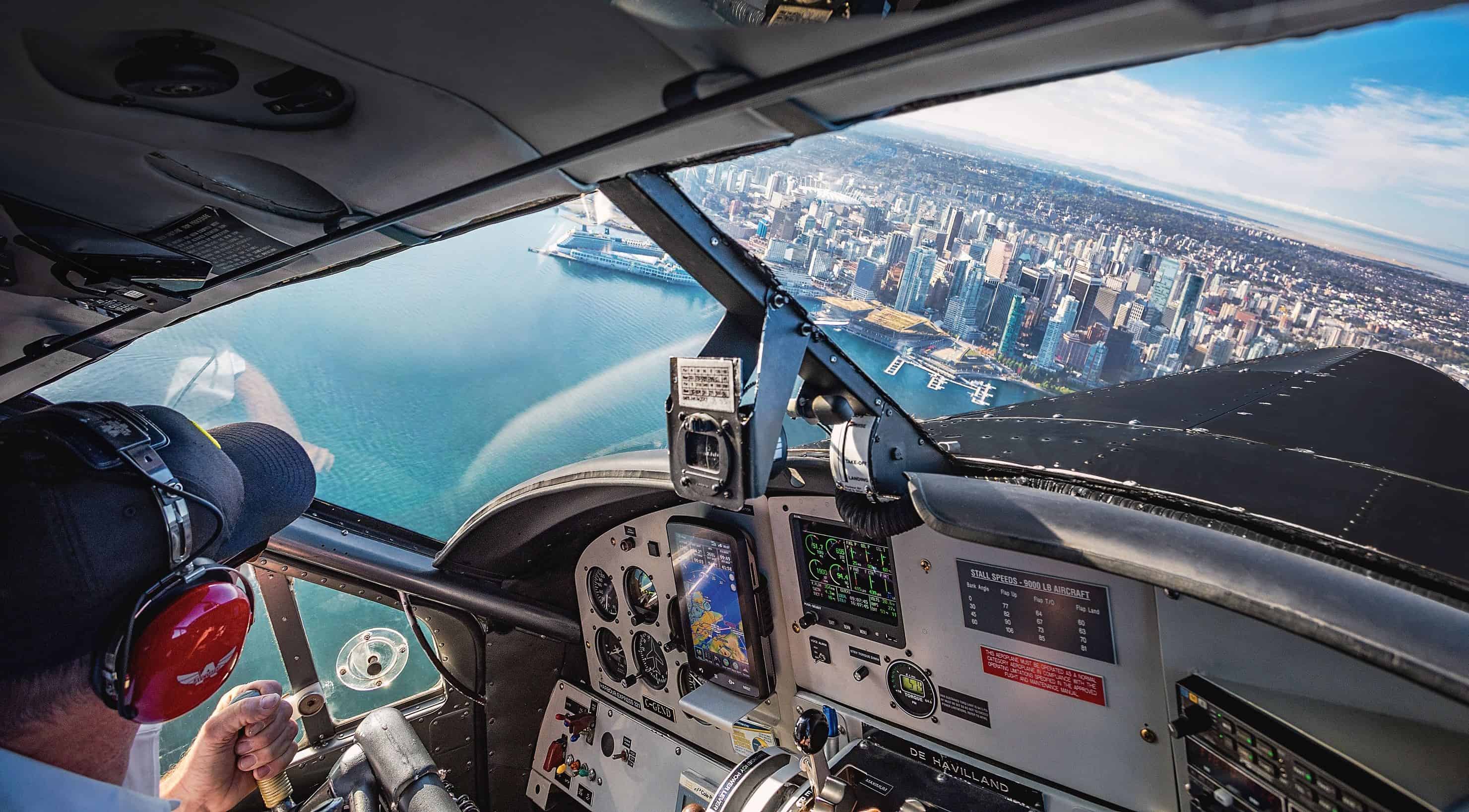
An Office in the Sky
Becoming a Floatplane Pilot with Harbour Air Seaplanes
They say, if you love what you do, you will never work a day in your life. For those that choose to pursue a career as a floatplane pilot, the cockpit becomes their office and water cooler chats take place via a radio headset. From landing in the heart of bustling cities such as Vancouver and Victoria, to exploring off-the-grid remote areas along British Columbia’s (BC) coast, it’s all in a day’s work for a floatplane pilot at Harbour Air Seaplanes.
A passion for flying often develops at a young age. Some are inspired by family members involved aviation and others become enthralled after their first experience riding in the co-pilot seat. From the unforgettable moment of the turbine propeller engine starting, to the radio chatter with control tower echoing through the headset, to the floats lifting from the water runway – it’s a feeling that some want to relive over and over again. So what does it take to turn that childhood dream into a reality?
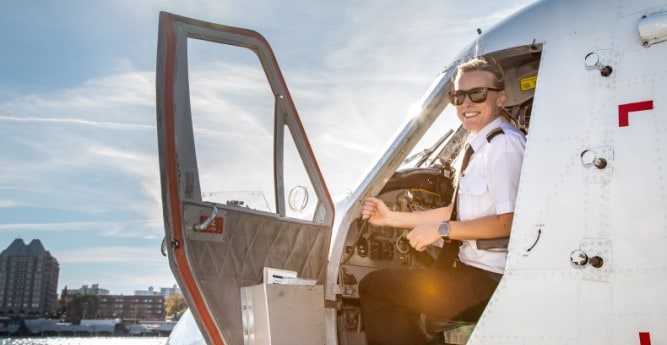
We caught up with Eric Scott, Harbour Air’s Vice President of Operations and Safety, to learn more about what it takes to become a floatplane pilot in BC. Eric has been with Harbour Air since 2011 but his professional flying career began much earlier when his passion for aviation was sparked in the fourth grade. This passion for flying has guided him into a well-established career with 31 years of flying experience and a number of high profile roles within the aviation industry. Eric’s repertoire includes soaring the friendly skies in a wide variety of aircraft including small Cessnas, DHC-2 de Havilland Beavers, DHC-3 Single Otters, BE 10 King Air, Beech 99, DHC-6 Twin Otters and Dornier 288. Eric has even had professional pilot training on fire bombing aircraft including the Piper Aerostar and the CL22 Super Scooper. With over 11,000 hours of flight time and over 7,000 hours of experience flying floats, Eric has done it all! We asked him a few questions about becoming a floatplane pilot and Harbour Air’s extensive training program.
Q: Including ground school training, on average, how long does it take to earn your Private and Commercial Pilots’ License?
Time to completion varies depending on what program you choose. There are degree and diploma programs available through universities and vocational schools. These programs vary from two to four years ending with diplomas or degrees. Flight Schools are another option for those who just want to complete their Commercial Pilots’ License. Full-time studies can be completed within one year.
Q: How many hours of flying are required to get your private and commercial license?
The minimum hour requirements for a Private Pilots’ License is 48 hours and 200 hours for a Commercial Pilots’ License.
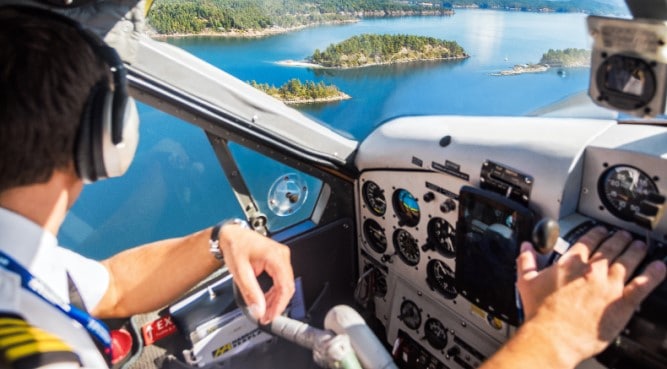
Q: Once I have my Private and Commercial Pilots’ License, how do I get trained on floats?
There are several schools that can do float training. It is a minimum 7-hour endorsement to add to your license. I recommend taking a 50-hour course that covers more than the basic minimum. Harbour Air offers a 50-hour Advanced Floatplane Scholarship through the BC Aviation Council every year.
Q: What are Harbour Air’s requirements to work as a pilot on each aircraft type?
Harbour Air hires for four main pilot positions. All positions require a Commercial Pilots’ License with a float endorsement for licensing. The DHC-6 Twin Otter positions also require a multi-engine rating. These times are not reflective of pilots who come through our mentorship program where we have oversight of their training from day one. Pilots in that program will not have as high of requirements in some areas.
DHC-6 Twin Otter First Officer -250 TT
DHC-2 Beaver Captain -1000 TT 500 floats
DHC-3T Otter Captain -2500 TT, 1000 PIC, 1000 floats with min 500 of it PIC
DHC-6 Twin Otter Captain -5000TT, 3000 PIC, 5000 Floats or 2500 floats if 1000 on CAP floats.
Q: What is the hiring process to become a pilot with Harbour Air?
It starts with an interview with the Flight Operations team. Next, applicants take an online behavioral assessment test along with reference checks and practical flight evaluations. Lastly, pre-employment enhanced medical testing is conducted with drug and alcohol testing.
Q: What qualities and traits does Harbour Air look for in a professional floatplane pilot?
We have a long list of traits that we look for. First off, pilots need to be safety oriented. That is number one. We want flight crews with great attitudes that are team member and customer focused. Above all else, they must be diligent in doing the right thing. Skill wise, they need to have a calm demeanor. Things change quickly in a floatplane environment and the crews need to be able to quickly adapt to those changing conditions. Consciously smooth pilots that are always striving to give the customer the best ride possible.
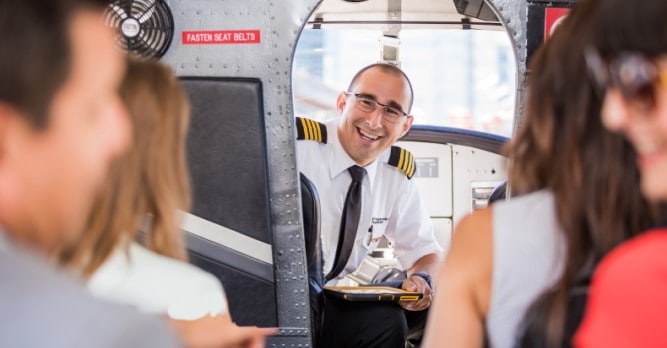
Q: Can you take us through the steps of the training process between becoming a new commercial pilot with Harbour Air to advancing to a Twin Otter Captain?
The Harbour Air Pilot Mentorship Program* takes a fresh commercial pilot and trains them to become a capable, confident and safe pilot. It starts with the hiring process as stated above, before they start into the program. All along the way they will have evaluations with targets of skill level they must meet to stay in the program.
*Must be a Harbour Air employee to qualify / be eligible.
- First Officer on the DHC-6 Twin Otter
- They start with a 10-hour pilot decision making program in the DHC-2 Beaver to evaluate their natural problem solving and decision-making process.
- Next they are trained as a First Officer on the DHC-6 Twin Otter where they will fly for a minimum of 500 hours while being mentored by our most highly experienced Captains.
- Training also involves regular written evaluations of their performance by the Captains which are submitted to the management team.
- DHC-2 Beaver Captain
- Once they surpass the 500 hours, and they have the blessing of the Captains as to their competency to be promoted, they get trained on the DHC-2 Beaver.
- Once the initial training program is completed, they are line indoctrinated and route checked with a training pilot for 30-50 hours or more until they are proficient enough to fly on their own.
- They will be restricted as to which routes they fly, and along the way they will have numerous spot line checks to ensure they are progressing and allow for expanded duties.
- After a minimum of 500 hours in the DHC-2 Beaver and a general satisfaction of the management team that the candidate is ready for further advancement, they will be trained on the DHC-3T Otter.
- DHC-3T Otter
- The training process is the same as on the DHC-2 but the line indoctrination will be a minimum of 50 hours. The restrictions after line indoctrination will be the same. Eventually they will be fully proficient and cut loose for any of our operations.
- DHC-6 Twin Otter Captain
- Advancement onto the DHC-6 Twin Otter Captain position usually goes to our most senior Captains and by then have all the necessary skills to take on the role which includes mentoring those junior pilots just starting out in the First Officer position. Full circle and usually takes about 8 years.

Q: Are the pilots required to do ongoing training or testing?
All the pilots are required to go through annual recurrent training. We also do mid-term line checks for added oversight.
Q: How many training captains are at Harbour Air and what is their flight experience?
We have six Training Captains at Harbour Air and an additional four in our Flight Operations management team. We also have a further 12 Line Indoctrination Captains that help out with line-oriented oversight. Cumulatively, between them all there is likely more than 400 years and 150,000 hours of flight experience.
Q: What does it take to become a training captain at Harbour Air?
To become a Training Captain at Harbour Air, you need to have a definite desire to drive our safety culture and a passion to bring out the best in people. You need to have the experience level that shows you have the knowledge to pass on.
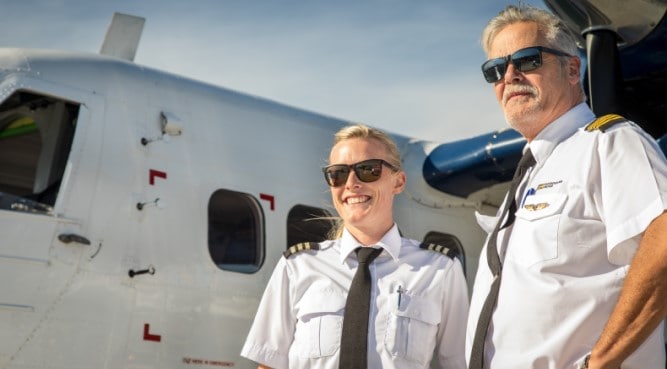
Q: Harbour Air has an award-winning safety culture. How does Harbour Air maintain this standard and why is it so important?
Harbour Air is safety focused, from the top down, the culture is driven to be a professional airline and not a bush pilot operation. We have been internationally recognized by the Honorable Company of Air Pilots and Navigators for our safety culture and program. We accomplish this in many different facets. While we are not required by regulation, we have a mature safety management system with just culture reporting. What this means is we want people to report hazards or incidents non-punitively.
We don’t want a culture of fear that if the employee makes an honest mistake, that they need to be concerned about disciplinary action. This may lead to the employee covering up the issue that may be a fault of process or training deficiencies. If we don’t know about it, we can’t mitigate it, and it may lead to a more catastrophic event.
So, no matter how it happened, provided it is reported and there is no malicious or grossly negligent intent behind it, there will be no disciplinary action. This allows us to know what is happening, work to the root causes and work to mitigate them before they become further issues.
Q: Anything else?
I am proud of the culture we have at Harbour Air. It is always a work in progress that needs re-evaluating to ensure it isn’t becoming complacent. We want to always be able to get the job done, in the safest most efficient matter while never compromising the safety of our team members or passengers
Looking for a new office view? We’re always on the lookout for dedicated, safety orientated, and hard working team members to join our crew. Visit our careers page for our current job postings.
